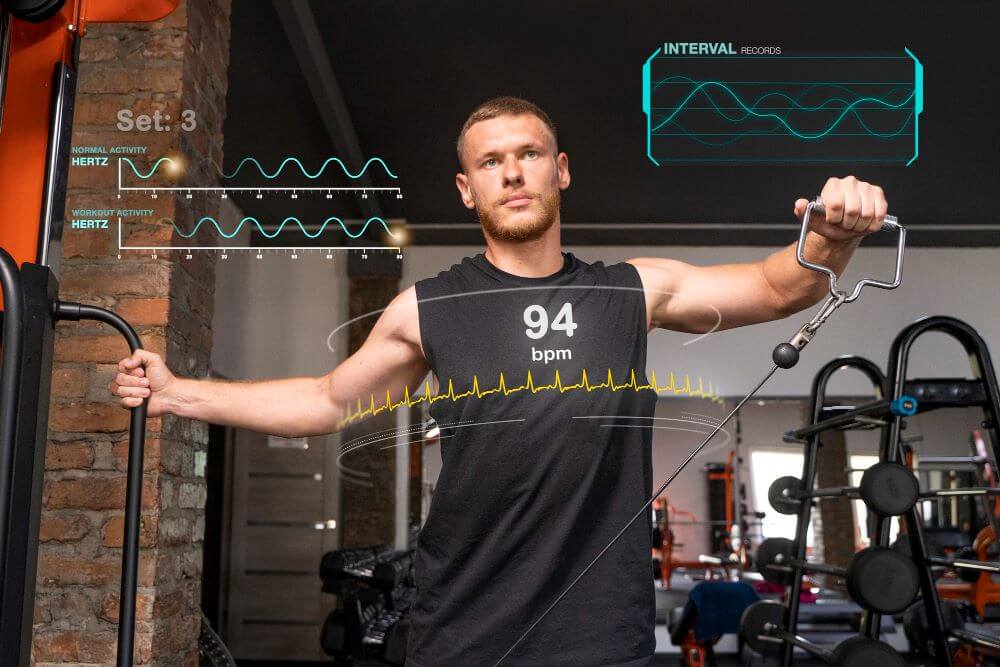Technology is reshaping how you coach, track, and connect with clients in 2025. From AI-powered training platforms to advanced wearables that deliver real-time performance data, the right tools can streamline your workflow and improve client results. The top tech tools this year help you personalize programs, monitor progress remotely, and keep clients engaged without adding extra workload.
With the rise of online fitness software, you now have access to platforms that allow you to deliver interactive workouts and track progress seamlessly, all from anywhere. Smart fitness trackers sync with coaching apps, providing accurate insights into heart rate, recovery, and activity levels.
Emerging innovations like virtual reality workouts, AI-driven habit tracking, and connected gym equipment are no longer niche—they’re becoming standard in forward-thinking coaching programs. By understanding which tools deliver the most value, you can stay competitive and offer a more efficient, data-driven coaching experience.
Essential Tech Tools Fitness Coaches Are Using in 2025
Fitness professionals in 2025 rely on connected devices, software platforms, and data-driven tools to improve training efficiency and client results. These technologies streamline communication, personalize programs, and give you measurable insights into performance and recovery.
Wearable Technology and Fitness Trackers
Wearable technology has become a core part of modern coaching. Devices like smartwatches, fitness trackers, and heart rate monitors give you continuous access to client metrics such as heart rate, calories burned, and training zones.
Many wearables now integrate GPS for outdoor activity tracking and sleep monitoring to assess recovery quality. This data helps you tailor workouts to the client’s current condition rather than relying on estimates.
Popular devices in 2025 include the Apple Watch X, Garmin Forerunner 965, and Whoop 5.0. To further personalize your experience, a wide variety of stylish and functional Apple watch bands make it easy to match your device to your lifestyle and training goals.
| Key Metrics from Wearables | Benefit for Coaches |
| Heart rate variability | Adjust training load |
| Step count & activity time | Track daily movement |
| Sleep stages | Optimize recovery |
Mobile Fitness Apps and Coaching Platforms
Mobile fitness apps allow you to deliver structured programs, track adherence, and maintain direct communication with clients. Platforms like Trainerize, TrueCoach, and MyPTHub let you create custom workouts, send reminders, and collect performance data without requiring in-person meetings.
Many of these apps include built-in video libraries and exercise demonstrations. This ensures your clients can follow proper form even when training remotely.
Custom-branded coaching apps are now more accessible, letting you maintain your identity while offering a professional interface. Integration with wearable devices means you can receive workout data automatically, reducing manual tracking.
Real-Time Feedback and Progress Tracking Solutions
Real-time feedback tools give you immediate insight into your client’s technique, effort, and performance. Smart gym equipment, AI-powered form analysis, and connected resistance machines can detect movement patterns and suggest corrections.
Some systems use live video analysis to highlight posture issues during a session. Others provide on-screen prompts or vibration alerts when form deviates from the target range.
For progress tracking, cloud-based dashboards compile data from wearables, apps, and gym systems. You can view charts showing trends in strength, endurance, or recovery, allowing you to adjust programs quickly based on objective results.
Emerging Trends and Innovations in Fitness Coaching Technology
In 2025, fitness coaching tools are placing greater emphasis on personalized health metrics, data-driven training plans, and holistic well-being. You now have access to technologies that not only track performance but also address mental resilience, recovery, and long-term physical function.
Behavior Change and Mental Health Integration
You can now use coaching platforms that combine habit tracking, goal setting, and mental health support in one place. Many apps integrate guided meditation, breathing exercises, and stress monitoring to help clients sustain motivation.
Wearables track heart rate variability (HRV) to measure recovery and stress levels. This data lets you adjust training intensity based on a client’s mental and physical readiness.
Some platforms also include AI-driven behavior change models. These use client history, preferences, and progress to recommend small, achievable actions that build lasting habits.
| Tool Type | Example Features |
| Mental Health Apps | Meditation, mood tracking |
| Wearables | HRV, sleep quality, stress scoring |
| Coaching Software | Automated habit reminders, progress analytics |
Strength Training and HIIT Technology
Strength training tools now include smart resistance equipment that automatically adjusts load based on form and fatigue. You can track reps, sets, and time under tension without manual logging.
For HIIT, connected devices measure VO₂ max, recovery time, and real-time heart rate zones. This allows you to fine-tune work-to-rest ratios for optimal performance gains.
Some platforms integrate video form analysis so you can give immediate feedback remotely. This helps maintain technique and reduce injury risk, especially for high-intensity sessions.
Key benefits:
- Accurate load progression tracking
- Personalized intensity zones
- Remote form correction
Functional Fitness and Longevity Tools
You now have access to devices that assess mobility, balance, and joint stability. These metrics help you design programs that improve movement quality, not just strength or endurance.
Longevity-focused tools track biological age, recovery speed, and muscle mass retention. This is especially valuable for older clients or those prioritizing long-term health over short-term performance.
Some systems integrate real-time gait analysis and flexibility scoring. This allows you to spot movement inefficiencies early and adjust training to prevent future limitations.
By combining functional assessments with traditional fitness metrics, you can create programs that support both performance and healthy aging.
Conclusion
You now have a clearer view of the leading tech tools shaping fitness coaching in 2025. From AI-driven training platforms to data-focused wearables, these tools give you practical ways to personalize programs and track progress with precision.
Your ability to choose and integrate the right tools will depend on your coaching style, client needs, and budget. Even small upgrades, like adopting a smarter tracking app, can improve client engagement and results.
As technology continues to evolve, staying informed and adaptable will help you deliver relevant, effective, and measurable coaching experiences.






